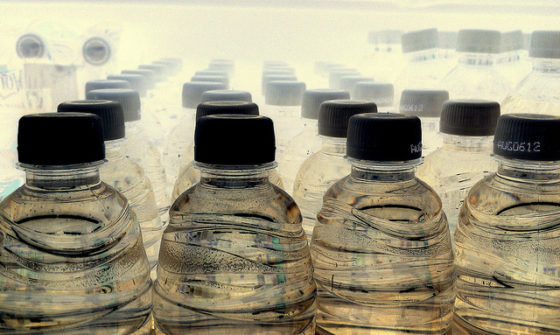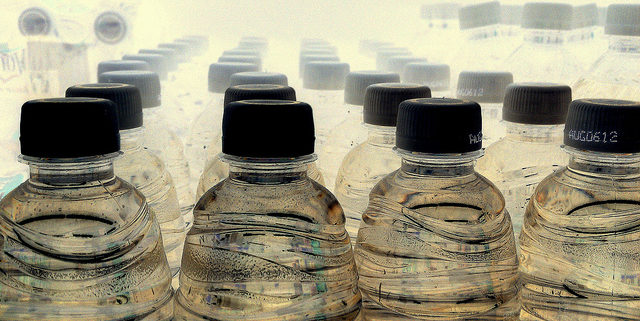BPA Plastic And Pregnancy – Are You Getting Exposed?
We work really har
What Is BPA Plastic?
Bisphenol A (BPA) is a common element of many different kinds of plastic and resins. These plastics and resins may be used to store food and beverages or to coat the insides of metal containers, including canned foods and metal water bottles. The BPA can then leach into the food or beverage in the container and from there end up in your system.
The problem is that BPA seems to mimic estrogen, an important hormone, in the body. It has been linked to problems with the neural and behavioral development of infants and children and may also affect their prostate glands. It has also been linked to cancer, obesity, and diabetes in children and adults, as well as fertility problems. After public outcry about the dangers, many companies are now specifically cutting out BPA plastic.
Sources Of BPA
Eating or drinking out of BPA plastic containers can definitely expose you to BPA. But there are a lot of less obvious sources, too. Women that are exposed to tobacco smoke, for example, have higher BPA levels than women not exposed to smoke. Eating large amounts of canned food, especially vegetables, can also increase your BPA levels. And here’s one you wouldn’t expect – working as a cashier can cause higher levels because the chemical is used to coat receipts to prevent smears.
In other words, you may still be exposed to this dangerous substance even if you specifically seek out non-BPA plastic. That said, there is little evidence one way or the other as far as the risk to the fetus. We know that BPA is linked to serious health problems in infants and children, but it’s not yet clear whether fetuses are exposed if their mothers are exposed or how that exposure affects them.
When it comes to your developing little one, of course, it’s always better safe than sorry. Avoiding BPA plastic and other sources of BPA certainly can’t hurt. Plus, BPA is linked to health problems in adults anyway so it’s probably better to avoid it regardless of pregnancy. And you’re making habits that will come in handy after delivery, since exposure is known to be dangerous to infants.
How To Avoid BPA
First, keep an eye out for the expected products – BPA plastic. Most manufacturers of food and beverage storage containers now specifically advertise that their products are BPA-free. Check the label before you buy. If it doesn’t specifically say that there’s no BPA, then it’s safer to choose a different product. And it’s not just Tupperware – don’t forget to check your sandwich bags, clingwrap, and any other plastic products that will come in contact with your food. And watch the beverages – water, soda, and other drinks in plastic bottles are also potential sources.
Canned foods, especially canned vegetables, are another common source of BPA. Resins containing that substance are frequently used to coat the insides of cans and other metal food and beverage containers. This source isn’t as well-known as BPA plastics, which means that manufacturers aren’t under the same pressure to remove it from their products. Unless the cans specifically note that they’re BPA-free, it’s safer to avoid them.
Styrofoam is another BPA culprit, especially if you heat it up. Heating styrofoam or BPA plastic is especially dangerous as the heat breaks down the containers and leaches extra BPA into the food or beverage. So, it’s always safer to stick to alternatives, especially when you’re heating them up – glass and ceramic are good options. Put your leftovers on a plate before heating them up to avoid the extra exposure.
And finally, receipts. The good news is that you’re probably not going to absorb much BPA over the course of a day with just a couple of receipts. You’re at a much higher risk if you work as a cashier, at a restaurant, or in another position that requires you to handle a large volume of receipts. This can be a tough one to avoid if it’s part of your job, but you may consider wearing gloves or asking for different duties during your pregnancy.
But BPA-Free Isn’t Necessarily Safe
Note that even products that are specifically labeled BPA-free may have other types of polycarbonate plastics in them, which could potentially cause similar problems. Companies use BPA for a reason: it’s clear, tough, and easy to manufacture and use. So when they remove BPA from their products, they often replace it with a substance that gives them similar results – and that often means a similar chemical structure.
Companies don’t have to remove every single compound that’s similar to BPA in order to call their products BPA-free. So, they can substitute it for other similar compounds and still put a BPA-free label on it.
So BPA plastic and other products containing that substance are unsafe. And BPA-free plastics and products may be unsafe. What are we supposed to do?
The reality is that it’s simply not possible to avoid every kind of plastic, everywhere, forever. It’s just too common. But we can cut out the sources closest to us in our food and beverage containers where possible, and that counts for a lot. Switching out plastic for glass and ceramic isn’t always convenient, but it may be a lot safer for you and for your little one, both before and after delivery.
Have any tips for avoiding BPA or useful alternatives to plastic products? Let us know in the comments!
Image Credit – Courtesy of liveoncelivewild and License








Leave a Reply
Want to join the discussion?Feel free to contribute!